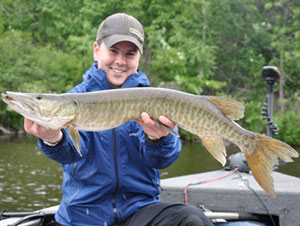A morel mushroom by any other name would taste delicious. And that’s fortunate, since the prized wild funghi are also known as dry land fish, molly moochers, hickory chicks, and pine cone mushrooms. In the mountains of Virginia and West Virgina, mushroom hunters call them “merkels” to express what a divine miracle it is to find one.
Foraging for wild mushrooms necessarily carries with it the skull-and-crossbones disclaimer of poison, so here's our funghi hunting disclaimer: Be careful, be knowledgeable, and, if in doubt: Don’t Eat It.
That said, now is the time to get out into the woods to look for morels. The season for the much-sought after mushrooms is beginning to wind down.
“One of the best things about them is they’re probably the most easy to identify mushroom you’ll see in the wild,” said Colin Kearns, the senior editor of Field & Stream. “While there are a couple of mushrooms called false morels, even those are very...easy to tell apart from true morels.”
True morels are distinctly cone-shaped, with big caps that sit on small stems. When cut lengthwise, they are hollow from the stem to the cap. “Wildman” Steve Brill also warns not to eat them raw or undercooked. To be edible, morels need to be cooked for at least 15 minutes.
When searching for morels in the woods, Kearns (pictured at right with a muskie) recommends looking along the edge of the forest, around trees like oaks, elms, and ash, as well as in old apple orchards.
“Another good tip to keep in mind when you’re looking for them, at least with trees, is: the deader, the better,” he said.
That means looking for trees that are so rotten that very little bark remains. “If you can find a tree like that, generally, you’ve hit a morel jackpot,” he said.
Kearns explains that morels are often considered the outdoorsman’s mushroom.
“They just coincide with so many things that are great in the outdoors at this time of year—with turkey hunting and fishing. Some of the best places to look for morels are in the turkey woods,” he said. “I think if you were to ask 10 hunters what his perfect spring day would be, his morning would be his turkey hunt and his afternoon would be a morel hunt in the woods.”
For those less inclined to start the day with a 4 A.M. turkey hunt, Ava Chin, who writes the "Urban Forager" column for the New York Times’ City Room blog, admits that she has found morels in the city.
She declined to even reveal which borough her top-secret spot was located in, but she said a friend once told her about finding a morel growing on the side of a building on the Lower East Side.
“It was such an incredible story, I almost didn’t believe it except that he was the person who had actually seen it,” she said.
For those errant downtown mushrooms, Chin adds that she’d avoid eating anything that wasn’t growing at least above knee-height and out of the reach of city dogs.
Try using morels—whether from the forest, the city, or from a farmers' market—in Field & Stream’s "Morel Cream Sauce," below. To learn more, check out Field & Stream’s beginner’s guide to hunting morels, and "Wildman” Steve Brill’s site explaining the basics of wild mushrooms.
Morel Cream Sauce
by David Draper, Field & Stream
1. In a medium skillet, sauté about a dozen cleaned morels, along with two cloves of minced garlic in a few tablespoons of butter. Throw in a generous pinch of salt.
2. After about 5 minutes, lower the heat and splash in a little dry white wine to deglaze the pan, letting it reduce by about half. (Don’t forget to splash a little in a glass for yourself.)
3. Turn off heat, slowly whisk in 1/2 cup of heavy cream and about a cup of venison stock (chicken stock works here as well).
4. If the sauce is a little thick, add more stock. If it’s too thin, put it back on the stovetop and gently simmer to thicken.
4. Add some tarragon or rosemary, depending on your preference. Salt and pepper to taste.